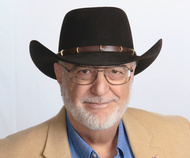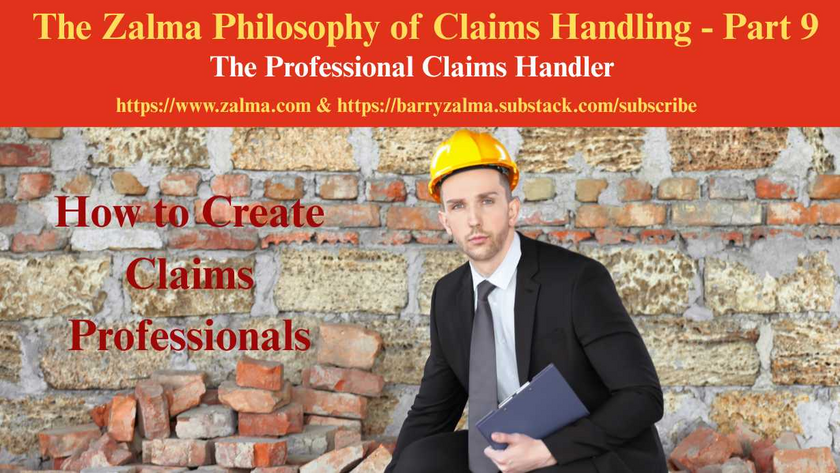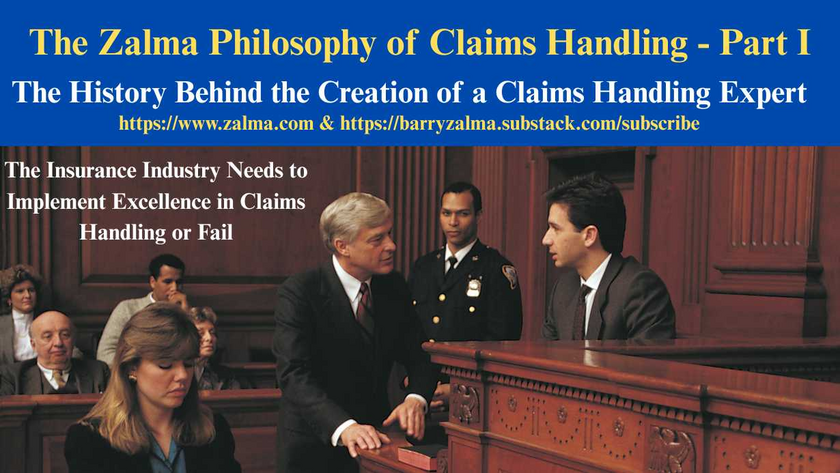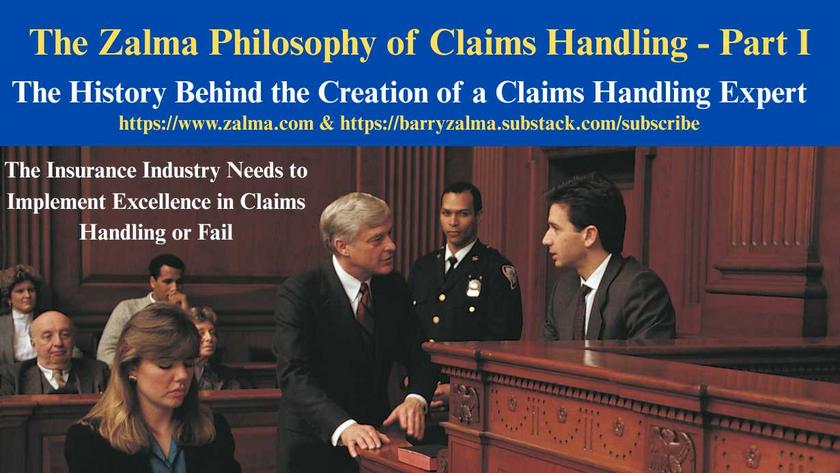
Inconsistent Pleadings and Argument Establish Coverage in One Case and Exclusion in Another
Read the full article at https://www.linkedin.com/pulse/its-nice-claim-one-fact-judge-another-next-barry-zalma-esq-cfe and at https://zalma.com/blog plus more than 4100 posts.
Posted on March 23, 2022 by Barry Zalma
The Delaware Supreme Court was called upon to determine whether a securities class action and a later follow-on action were related actions, such that the follow-on action was excluded from insurance coverage under later-issued policies. The Superior Court found that the follow-on action was “fundamentally identical” to the first-filed action and therefore excluded from coverage under the later-issued policies.
In First Solar, Inc. v. National Union First Insurance Company Of Pittsburgh, PA and XL Specialty Insurance Company, No. 217, 2021, Supreme Court of Delaware (March 16, 2022) the Supreme Court used the words of the Plaintiff in one case to destroy its claims in the current case.
FACTS
First Solar, Inc. (“First Solar”) manufactures solar panels and sells photovoltaic (“PV”) power plants. First Solar competes in the renewable energy space and has installed PV facilities throughout the world. In March 2012, First Solar stockholders filed a class action lawsuit against the company alleging that it violated federal securities laws by making false or misleading public disclosures. The parties refer to the original suit as the Smilovits Action. The Smilovits plaintiffs alleged that from April 30, 2008, to February 28, 2012, First Solar misrepresented that it had a winning formula for reducing manufacturing costs so rapidly and dramatically as to make solar power competitive with fossil fuels and perpetuated its fraudulent self-portrayal by concealing and misrepresenting the nature and extent of major manufacturing and design defects in its solar modules, misrepresented its financials, artificially inflated its stock prices, allowed individuals to engage in insider trading, manipulated the cost-per-watt metrics, and understated its expenses in violation of General Accepted Accounting Principles (“GAAP”).
National Union Fire Insurance Company of Pittsburgh, PA (“National Union”) provided insurance coverage for the Smilovits Action under a 2011-12 $10 million “claims made” directors and officers insurance policy.
On June 23, 2015, while the Smilovits Action was pending, First Solar stockholders who opted out of the Smilovits Action filed what has been referred to as the Maverick Action. The Maverick Action alleged violations of the same federal securities laws as the Smilovits Action, as well as violations of Arizona statutes and claims for fraud and negligent misrepresentation with mainly the same allegations as the Smilovits Action.
When the plaintiffs filed the Maverick Action in 2015, First Solar had a $10 million “claims made” policy with National Union for 2014-15 (the “Primary Policy”) and a $10 million layer of excess coverage with XL Specialty Insurance Company (“XL Specialty” and the “XL Specialty Policy”).
The 2014-15 Primary Policy excluded coverage for “Related Claims.” A Related Claim is “a Claim alleging, arising out of, based upon or attributable to any facts or Wrongful Acts that are the same as or related to those that were . . . alleged in a Claim made against an Insured.” A Related Claim is deemed first made at the time of the previously made claim under the following conditions:
(b) Relation Back to the First Reported Claim or Pre-Claim Inquiry: Solely for the purpose of establishing whether any subsequent Related Claim was first made . . . during the Policy Period or Discovery Period (if applicable), if during any such period:
[C]laims actually first made or deemed first made prior to the inception date of this policy . . . are not covered under this policy[.]
The Related Claim Exclusion will bar coverage under the 2014-15 policies if the Maverick Action is a Related Claim to the Smilovits Action.
In 2015, First Solar exhausted all coverage under the 2011-12 National Union policy. Chubb, an excess insurer next in line after the 2011-12 National Union policy, accepted coverage of the Maverick Action because “the new Maverick litigation is based on the same facts and circumstances of the previously noticed Smilovits class action complaint,” and as such, “[Chubb] treats this matter as a related claim.”
Chubb provided coverage for the Maverick Action as the litigation progressed. In the Smilovits Action, First Solar filed a “Motion to Transfer Related Case” to litigate both Actions before the same judge. It argued that “[t]he substantial overlap in legal and factual issues and the substantial overlap in parties weigh in favor of transferring the Maverick [] Action to this Court.” The court granted the motion.
After years of litigation and after incurring over $80 million in defense costs, First Solar settled the Smilovits Action on January 5, 2020 for $350 million. All primary and excess insurers under the 2011-12 policies paid their policy limits. Having settled the Smilovits Action and exhausted all coverage under the 2011-12 policies, First Solar began to arbitrate a settlement of the Maverick Action. It sought coverage under the 2014-15 Primary Policy and the XL Specialty Policy (the “Policies”) for the Maverick Action. First Solar eventually settled the Maverick Action for $19 million without a coverage commitment from National Union or XL Specialty (collectively, the “Insurers”). After the Insurers denied coverage under the Policies, First Solar filed suit in the Superior Court for breach of contract and declaratory relief that the Insurers were obligated to provide coverage under the Policies.
The Superior Court litigation focused on the relatedness of the Smilovits and Maverick Actions. The Superior Court held that a complaint is “related to” or “aris[es] out of” a previous complaint if the claims are “fundamentally identical.” Fundamentally identical lawsuits, according to the court, require the “same subject” and “common facts, circumstances, transactions, events, and decisions.”
ANALYSIS
On appeal, First Solar argued that the Superior Court ruled incorrectly that the Smilovits Action and the Maverick Action were fundamentally identical. The Insurers argued that the Maverick Action meets the “fundamentally identical” standard because it is directed to the same Wrongful Act and fraudulent scheme as the Smilovits Action.
The Supreme Court noted that the Primary Policy’s Related Claim provision is broad. The question on appeal was, therefore, whether the Maverick Action raises Claims that “aris[e] out of, [are] based upon or attributable to any facts or Wrongful Acts that are the same as or related to” the Smilovits Action.
If the Maverick Action is a Related Claim under the Primary Policy. Both Actions are based on the same alleged misconduct-First Solar’s misrepresentations about the cost-per-watt of its solar power.
The Supreme Court concluded that while there might be minor differences – like the disparity between a certain cost-per-watt level and grid parity – the Actions focus on First Solar’s misrepresentations about the cost of solar power. Both Actions allege violations of the same federal securities laws from this wrongful conduct. In both cases, plaintiffs allege that First Solar made material misrepresentations regarding its solar power capabilities as part of a fraudulent scheme to increase stock prices.
If there was any remaining doubt about relatedness under the Primary Policy language, the Supreme Court relied on what First Solar said about the two Actions when insurance coverage was not at issue. Because First Solar agreed in another case that the Actions were nearly identical its agreement is exactly opposite to what it argued to the Delaware Supreme Court. In its filings, First Solar claimed that the Maverick Action made “nearly identical allegations” to other actions “asserting that First Solar’s stock price decline was somehow caused by a fraudulent scheme to conceal the existence and costs of various manufacturing deviations.” First Solar was correct in its argument to consolidate the cases because the Smilovits Action and the Maverick Action include different misrepresentations and evidence to support their claims-not different Wrongful Acts.
The Primary Policy’s Relation Back Provision applies when two claims are related. Under the Policy, “any Related Claim that is subsequently made against an Insured . . . shall be deemed to have been first made at the time that such previously reported Claim was first made.”
Since claims first made before the inception date of the Primary Policy are not covered the Superior Court correctly applied the Primary Policy language, because if the Maverick Action relates back to the Smilovits Action, it is deemed “first made” at the time of the Smilovits Action and thus “not covered under this policy.”
The Maverick Action Claim was deemed by the Supreme Court to be first made at the time of the Smilovits Action and is excluded from coverage under the Related Claim Exclusion of the Policies. As a result, the judgment of the Superior Court was affirmed.
ZALMA OPINION
It is essential that a litigant seeking insurance coverage must act consistently. In this case First Solar first argued that Smilovits and Maverick were identical and should be tried together which worked well until the available insurance coverage was exhausted and then, to gain more insurance coverage, claimed they were different and it was entitled to coverage for the Maverick Action. The court did not ignore the contradiction and held in favor of the insurer.
(c) 2022 Barry Zalma & ClaimSchool, Inc.
Barry Zalma, Esq., CFE, now limits his practice to service as an insurance consultant specializing in insurance coverage, insurance claims handling, insurance bad faith and insurance fraud almost equally for insurers and policyholders. He also serves as an arbitrator or mediator for insurance related disputes. He practiced law in California for more than 44 years as an insurance coverage and claims handling lawyer and more than 54 years in the insurance business. He is available at http://www.zalma.com and [email protected].
Over the last 54 years Barry Zalma has dedicated his life to insurance, insurance claims and the need to defeat insurance fraud. He has created a library of books and other materials to make it possible for insurers and their claims staff to become insurance claims professionals.
Subscribe to Zalma on Insurance at locals.com https://zalmaoninsurance.local.com/subscribe. Subscribe to Excellence in Claims Handling at https://barryzalma.substack.com/welcome. Write to Mr. Zalma at [email protected]; http://www.zalma.com; http://zalma.com/blog; I publish daily articles at https://zalma.substack.com. Go to the podcast Zalma On Insurance at https://anchor.fm/barry-zalma; Follow Mr. Zalma on Twitter at https://twitter.com/bzalma; Go to Barry Zalma videos at Rumble.com at https://rumble.com/c/c-262921; Go to Barry Zalma on YouTube- https://www.youtube.com/channel/UCysiZklEtxZsSF9DfC0Expg; Go to the Insurance Claims Library – https://zalma.com/blog/insurance-claims-library/ Read posts from Barry Zalma at Go to the Insurance Claims Library – https://zalma.com/blog/insurance-claims-library/
Refusal to Provide Workers’ Compensation is Expensive
Post 5240
Read the full article at https://lnkd.in/guC9dnqA, see the video at https://lnkd.in/gVxz-qmk and at https://lnkd.in/gUTAnCZw, and at https://zalma.com/blog plus more than 5200 posts.
In Illinois Department of Insurance, Insurance Compliance Department v.USA Water And Fire Restoration, Inc., And Nicholas Pacella, Individually And As Officer, Nos. 23WC021808, 18INC00228, No. 25IWCC0467, the Illinois Department of Insurance (Petitioner) initiated an investigation after the Injured Workers’ Benefit Fund (IWBF) was added to a pending workers’ compensation claim. The claim alleged a work-related injury during employment with the Respondents who failed to maintain workers’ compensation Insurance.
Company Overview:
USA Water & Fire Restoration, Inc. was incorporated on January 17, 2014, and dissolved on June 14, 2019, for failure to file annual reports and pay franchise taxes. It then operated under assumed names including USA Board Up & Glass Co. and USA Plumbing and Sewer. The business ...
Arsonist Incompetently Moves Pro Se to Avoid Prison
Post 5239
Read the full article at https://lnkd.in/gRX8TfKn, see the video at https://lnkd.in/gY3Jvnqp and at https://lnkd.in/gRCaaf-3, and at https://zalma.com/blog plus more than 5200 posts.
In Christopher A. Barosh v. Morris Houser, et al., Civ. No. 22-0769, United States District Court, E.D. Pennsylvania (November 25, 2025) a convicted arsonist and insurance fraudster moved the USDC acting in Pro se filed Objections to Magistrate Judge Reid’s Recommendation that the US District Judge dismiss his § 2254 Petition to avoid jail.
BACKGROUND
In October 2005, Barosh set fire to his girlfriend’s Philadelphia home — some 25 hours before the cancellation of the property’s insurance policy. Several witnesses saw Barosh leaving the property shortly before the fire erupted. After the fire, Barosh made “two separate admissions of guilt.”
He attempted to pay an acquaintance to provide him with an alibi for the time of the arson. The eyewitnesses, brother, and ...
Conditional Release Allows Supplemental Claims
Post 5238
Read the full article at https://lnkd.in/ge2yNQby, see the video at https://lnkd.in/gcSF9KWj and at https://lnkd.in/gQfJqwiM, and at https://zalma.com/blog plus more than 5200 posts.
A Release Should Totally Resolve Dispute
In Harvey et al. v. Hall, No. A25A1774, Court of Appeals of Georgia, Fourth Division (December 3, 2025) Paul Harvey, an employee of Arthur J. Dovers (d/b/a 3D Mobile Home Services), drove a truck towing a trailer loaded with machinery and equipment. Harvey fell asleep, veered off the road, and crashed into a culvert, causing Lamar Hall serious injuries.
FACTS OF SETTLEMENT
On August 18, 2020, Hall signed a limited liability release under OCGA § 33-24-41.1, releasing Harvey, Dovers, and their insurer (Georgia Farm Bureau Insurance Company) from liability for the accident in exchange for $50,000, “except to the extent other insurance coverage is available which covers the claim.”
Dovers’s general liability insurer (Republic-Vanguard ...
The Professional Claims Handler
Post 5219
Posted on October 31, 2025 by Barry Zalma
An Insurance claims professionals should be a person who:
Can read and understand the insurance policies issued by the insurer.
Understands the promises made by the policy.
Understand their obligation, as an insurer’s claims staff, to fulfill the promises made.
Are competent investigators.
Have empathy and recognize the difference between empathy and sympathy.
Understand medicine relating to traumatic injuries and are sufficiently versed in tort law to deal with lawyers as equals.
Understand how to repair damage to real and personal property and the value of the repairs or the property.
Understand how to negotiate a fair and reasonable settlement with the insured that is fair and reasonable to both the insured and the insurer.
How to Create Claims Professionals
To avoid fraudulent claims, claims of breach of contract, bad faith, punitive damages, unresolved losses, and to make a profit, insurers ...

The History Behind the Creation of a Claims Handling Expert
The Insurance Industry Needs to Implement Excellence in Claims Handling or Fail
Post 5210
This is a change from my normal blog postings. It is my attempt. in more than one post, to explain the need for professional claims representatives who comply with the basic custom and practice of the insurance industry. This statement of my philosophy on claims handling starts with my history as a claims adjuster, insurance defense and coverage lawyer and insurance claims handling expert.
My Training to be an Insurance Claims Adjuster
When I was discharged from the US Army in 1967 I was hired as an insurance adjuster trainee by a professional and well respected insurance company. The insurer took a chance on me because I had been an Army Intelligence Investigator for my three years in the military and could use that training and experience to be a basis to become a professional insurance adjuster.
I was initially sat at a desk reading a text-book on insurance ...

The History Behind the Creation of a Claims Handling Expert
The Insurance Industry Needs to Implement Excellence in Claims Handling or Fail
Post 5210
This is a change from my normal blog postings. It is my attempt. in more than one post, to explain the need for professional claims representatives who comply with the basic custom and practice of the insurance industry. This statement of my philosophy on claims handling starts with my history as a claims adjuster, insurance defense and coverage lawyer and insurance claims handling expert.
My Training to be an Insurance Claims Adjuster
When I was discharged from the US Army in 1967 I was hired as an insurance adjuster trainee by a professional and well respected insurance company. The insurer took a chance on me because I had been an Army Intelligence Investigator for my three years in the military and could use that training and experience to be a basis to become a professional insurance adjuster.
I was initially sat at a desk reading a text-book on insurance ...














